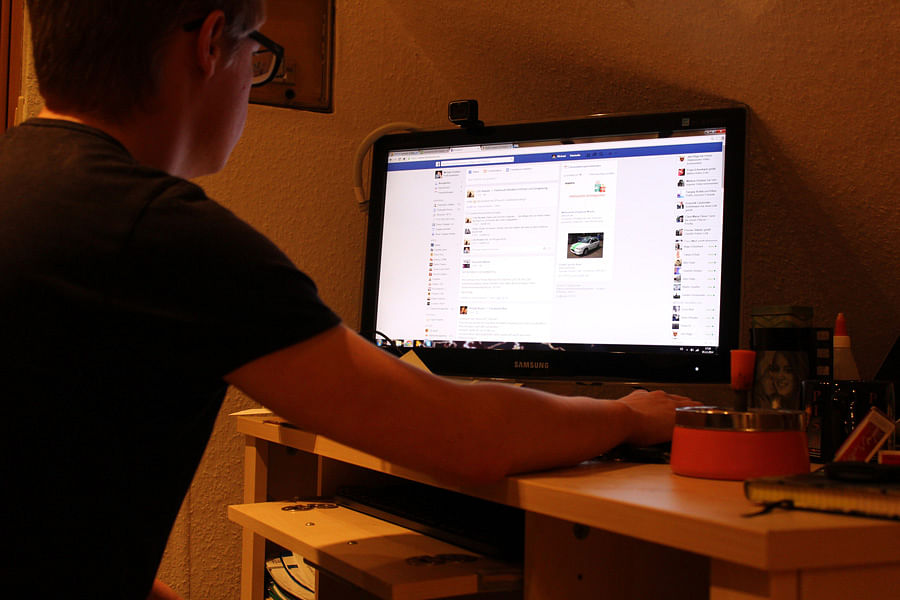
Imagine you've just gotten off work at night, after staring at your computer for hours and doing what work asks of you. Now you want go home and just sleep off the tiredness that's crept in, but you just can't. Your eyes burn and sleep just won't hit you until hours later, when you're supposed to get up.
This continues for days and when you finally go back to the normal work days, you realise your sleep cycle is completely botched.
How does one avoid this conundrum? Enter dark mode and night mode.
These modes are the rage in the display technology world today, with device manufacturers scrambling to include either or both modes into their products and apps. Both claim to help reduce eye stress during prolonged exposure to a screen. But what is the difference between the two?
Before all this, a small lesson on the visible light spectrum: Light, as we call it, is a part of the electromagnetic spectrum. The spectrum consists of electromagnetic radiation that is used to perceive objects, send information and even cook your food. It occupies a very wide range of wavelength and frequency, with visible light taking a tiny fragment. The light we see takes up a small band between 400-700 nanometres. The light screens typically generate, blue light, is at the lower end of the spectrum.
Blue light is something everyone is exposed to during the day and it's beneficial at that time because it helps keep the body and mind active and attentive. However, once night sets in, it becomes a troublesome affair to keep yourself exposed to it because it can mess with your circadian rhythm and disrupt normal sleep patterns.
But even without the blue-light-at-night issue, the intensity of the light can be an issue for certain people who may be sensitive to light or find that the traditionally blue-white background used by apps is making it difficult for them to concentrate.
To counter this issue, many apps and devices these days come equipped with a 'night mode' to reduce the effect of blue light by steadily replacing it with lower energy yellow-red light, or a dark mode, which completely flips the user interface (UI) of an app to a black screen. Both modes have their own benefits and uses.
Dark mode:
Dark mode is a UI design aspect which turns the background of apps and devices that traditionally have a light colour shade to a dark colour shade, ranging from gray to black. What this does is reduce the surface area of the direct blue-white light emission to text and other graphical components, thus reducing the stress on the eye during usage and arguably making text more readable.
Dark mode is featured on various apps across Android, iOS, Windows and MacOS. Some apps (such as YouTube) support dark mode natively, while others may require third-party add-ons, but the quality of a forced dark mode could be sub-par as it depends on how much work has been done to adapt the text and other elements of the app to the dark colour scheme. The upcoming Android Q will feature support for a system-wide dark mode (but it's a work-in-progress). On Windows 10, the dark mode can be enabled by going into Settings -> Personalization -> Colors and choosing the 'Dark' mode. Note that this works only with versions 1809 and above.
Dark mode can be enabled on most apps that have it built-in by going into the app's settings and enabling the function. Just try it, once you embrace the comfort of the dark side, you'll probably not want to go back to the light.
Night mode
The functional goal night mode is the same as dark mode, to reduce the strain on the eyes. However, unlike dark mode, which can be used throughout the day, night mode is recommended to be used during the evening, just hours before you're preparing to go to sleep.
The key difference between night mode and dark mode is while dark mode switches the UI background to a darker shade along with any corresponding colour scheme flips, night mode changes the colour being emitted by the screen to a warmer colour.
Traditionally, blue-white is the colour emitted by a display that generates its own light - it is considered 'cool'. Yellow-red colour, which is the target light emitted by night mode apps, is considered 'warm' and is shown to be effective at not only reducing eye stress but also helping the circadian rhythm by blocking out blue light.
Night mode is supported on Android, iOS, Windows and Mac through either native implementations in more recent versions or through third-party apps. For Windows, the most popular app to make use of night mode is f.lux, though Windows 10 has a baked-in night mode program.
How to use Night Mode:
Android:
Many Android Oreo and Pie devices support night mode natively. To access it, just go to settings -> display settings -> Night Light. If your device does not support it, you can download apps from the Play Store to use the mode.
Windows:
If you're using Windows 10, just go to Settings -> System -> Display, and enable the night light mode. If you're on previous versions of Windows, you can download f.lux and rest easy.
iOS/Mac:
MacOS has its own night mode called 'Night Shift', which can be accessed on MacOS Sierra 10.12.4 or above. iOS has Night Shift as well, which can be accessed by opening the control center and going into the brightness control menu.